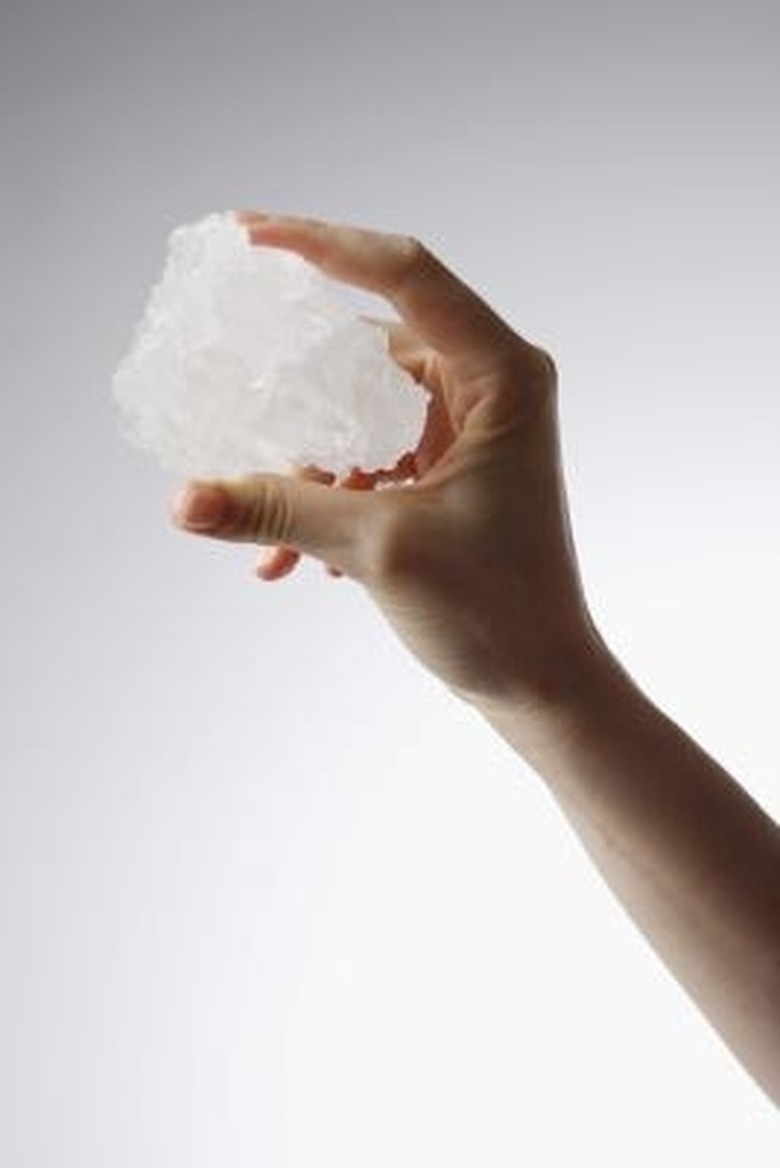How Do Epsom Salt Crystals Form?
Process
Growing Epsom salt crystals is a straightforward process that can be easily accomplished with a salt water solution and a bowl or other container. Rocks are placed in the containers to provide a site from which the crystals will grow. Salt and hot water is mixed together to create the solution that is poured over the rocks in the bowl to provide the basis for crystal growth. Over time the salt crystals begin to form as the water evaporates.
Science
Science
When growing Epsom salt crystals, the first step involves dissolving salt in hot water. Hot water is important because the temperature of the water has a direct effect on the amount of salt that can be dissolved in it. Heat increases the amount of space available between molecules and, as a result, hot water will hold more salt than cold water. Dissolving is not a chemical change either: water is simply pulling the salt atoms apart and not changing the actual salt molecules themselves.
When no more salt can dissolve in water, the solution is considered saturated because all the available molecular space has been filled. When the solution begins to cool, the space between the molecules decreases and the salt is slowly pushed out as a solid, which is also the beginning of crystal formation. Furthermore, the evaporation of water hastens the crystal formation process. Evaporation is the process in which water becomes a gas and rises. Epsom salt, which does not change states as easily as water does, remains behind in its solid form, resulting in long needle-like formations.
Differences
Differences
Different types of salt actually have their own crystalline shapes. For example, Epsom salt, which is a combination of magnesium and sulfate ions, is shaped more like a prism. On the other hand, table salt, which is a combination of sodium and chloride ions, is more cube-shaped. Therefore, the type of salt you use to form crystals will result in forms reflective of that particular salt as water evaporates.
Cite This Article
MLA
Contributor, . "How Do Epsom Salt Crystals Form?" sciencing.com, https://www.sciencing.com/do-epsom-salt-crystals-form-5750721/. 24 April 2017.
APA
Contributor, . (2017, April 24). How Do Epsom Salt Crystals Form?. sciencing.com. Retrieved from https://www.sciencing.com/do-epsom-salt-crystals-form-5750721/
Chicago
Contributor, . How Do Epsom Salt Crystals Form? last modified March 24, 2022. https://www.sciencing.com/do-epsom-salt-crystals-form-5750721/
